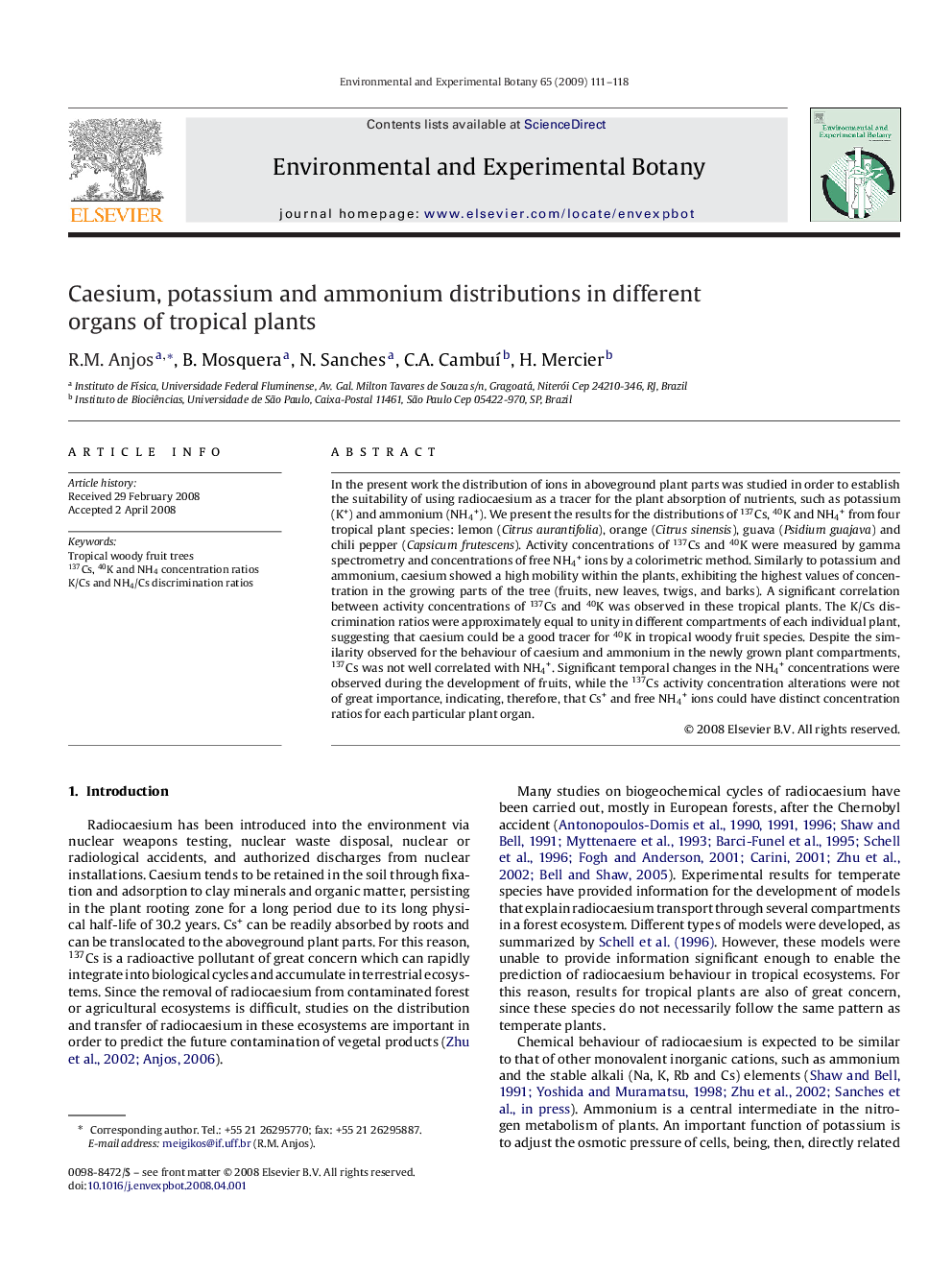| کد مقاله | کد نشریه | سال انتشار | مقاله انگلیسی | نسخه تمام متن |
|---|---|---|---|---|
| 4555367 | 1329254 | 2009 | 8 صفحه PDF | دانلود رایگان |

In the present work the distribution of ions in aboveground plant parts was studied in order to establish the suitability of using radiocaesium as a tracer for the plant absorption of nutrients, such as potassium (K+) and ammonium (NH4+). We present the results for the distributions of 137Cs, 40K and NH4+ from four tropical plant species: lemon (Citrus aurantifolia), orange (Citrus sinensis), guava (Psidium guajava) and chili pepper (Capsicum frutescens). Activity concentrations of 137Cs and 40K were measured by gamma spectrometry and concentrations of free NH4+ ions by a colorimetric method. Similarly to potassium and ammonium, caesium showed a high mobility within the plants, exhibiting the highest values of concentration in the growing parts of the tree (fruits, new leaves, twigs, and barks). A significant correlation between activity concentrations of 137Cs and 40K was observed in these tropical plants. The K/Cs discrimination ratios were approximately equal to unity in different compartments of each individual plant, suggesting that caesium could be a good tracer for 40K in tropical woody fruit species. Despite the similarity observed for the behaviour of caesium and ammonium in the newly grown plant compartments, 137Cs was not well correlated with NH4+. Significant temporal changes in the NH4+ concentrations were observed during the development of fruits, while the 137Cs activity concentration alterations were not of great importance, indicating, therefore, that Cs+ and free NH4+ ions could have distinct concentration ratios for each particular plant organ.
Journal: Environmental and Experimental Botany - Volume 65, Issue 1, January 2009, Pages 111–118